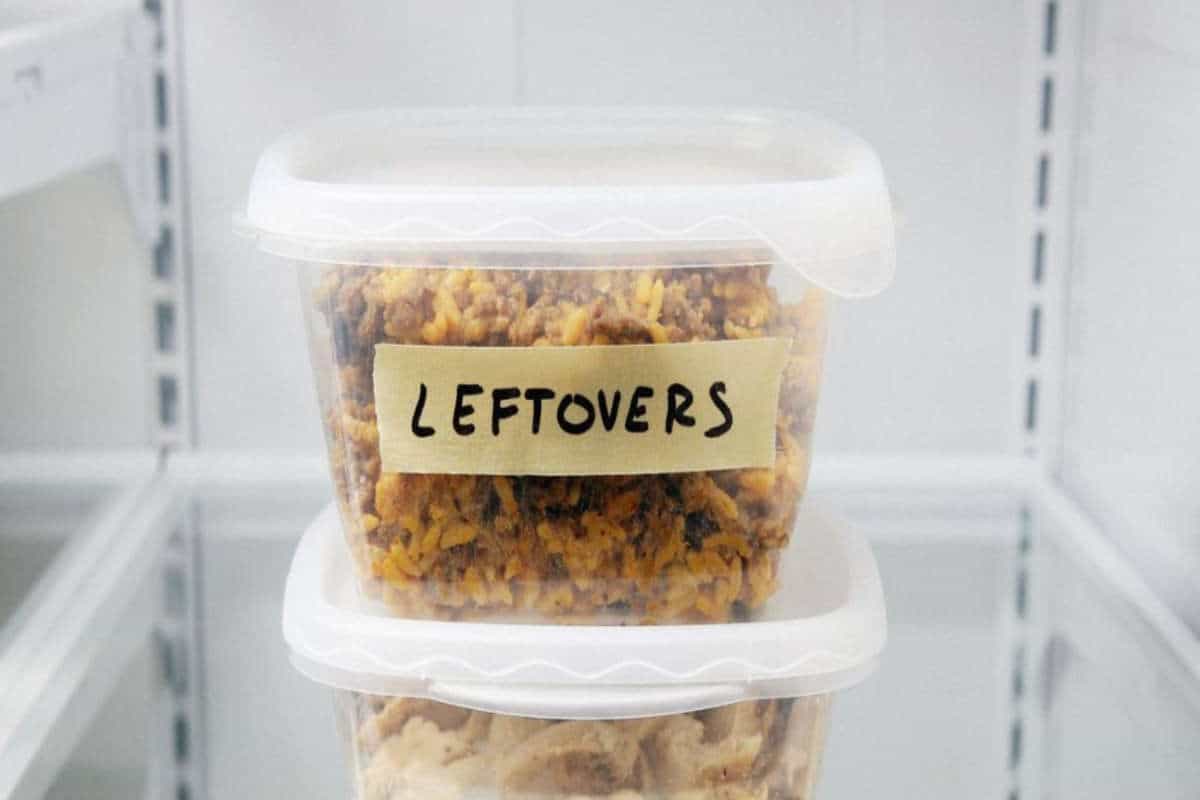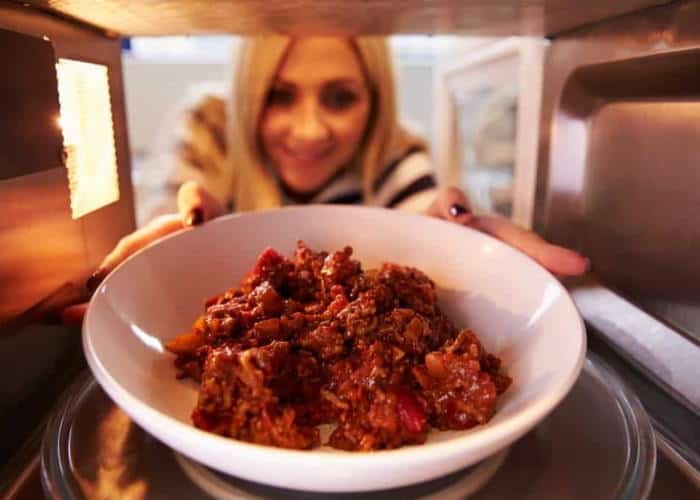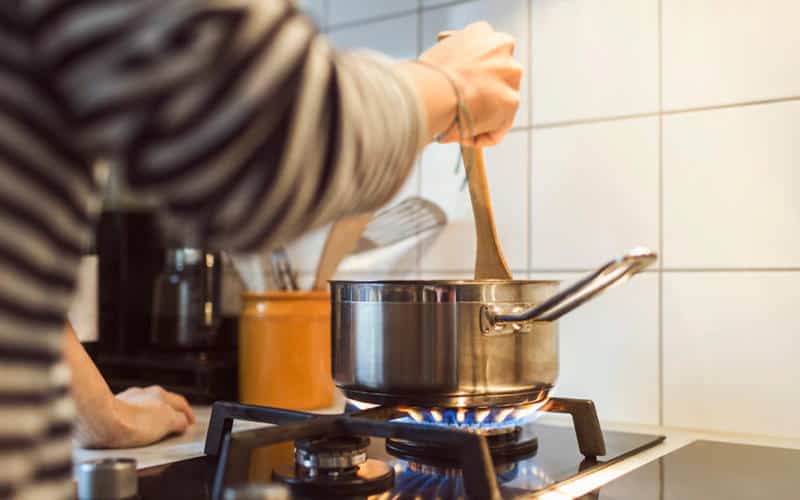
The Safest Ways to Reheat All Your Leftovers
The secret to safe and good-tasting leftover meals is getting the right reheat food temperature. Proper reheating of food is also a matter of safety. In this guide, you will learn how to reheat leftover food with confidence.
Table of Contents
Basics of Reheat Food Temperature
Reheat food using the same tool and method as though it were freshly cooked.
If you have a full kitchen, then you can follow this rule to get as close to the original as possible.
This works most of the time; you can reheat roast chicken or turkey in the oven, soup in a pot, etc. Using a similar method will simply heat up the food close to how it was cooked.
Second, the General Guidelines
 Proper handling is probably the most important thing when it comes to reheating leftovers, not just for taste, but more importantly for your health. Improperly reheated leftovers can easily jeopardize your health due to food poisoning.
Proper handling is probably the most important thing when it comes to reheating leftovers, not just for taste, but more importantly for your health. Improperly reheated leftovers can easily jeopardize your health due to food poisoning.
Here are the general safety guidelines you need to remember:
- Cool leftover food as quickly as possible (2 hours or less). Keep it inside a clean and sealed container and store inside the fridge for a maximum of 3 to 4 days.
- You can freeze leftover food for up to 4 months. Frozen leftovers are generally safe to eat, but make sure to take note of the flavor and texture.
- When reheating frozen leftovers, defrost it by transferring the food from the freezer to the fridge. You can also use a microwave to defrost. After defrosting and reheating, refrigerate and consume within 3 to 4 days.
- You can use the oven, microwave, or saucepan to reheat partially defrosted food. It will simply take longer to reheat food that is not completely thawed.
- When reheating food, make sure to reach the right reheat food temperature (165°F (70°C)) and maintain it for at least two minutes. Stir food to reheat evenly, especially when you use the microwave.
- Serve reheated food immediately.
- Do not refreeze defrosted leftover food.
- Do not reheat more than once.
Obviously, many people don’t have the luxury of a fully functional kitchen at their disposal. Some only have access to an office microwave. So what can you do in these instances?
The Three Main Appliances for Reheating
There are three main appliances that you can rely on for reheating your food.
- Oven (or oven toaster)
- Microwave
- Stovetop

Ovens (or oven toaster)
Ovens provide a quick and convenient reheating solution. It works gently on food. If you’re worried about drying out the food, simply cover or wrap it with foil (but you should never use foil in the microwave). The reheated food temperature for the oven should be set at low or no more than 350°F. Check on your food once in a while to make sure it is heated thoroughly.
Some foods you can reheat in the oven include:
- Baked goods – Muffins, pies, tarts, or any baked foods do not get soggy when reheated using the oven. Stale cookies can be brought to life with just a few minutes in the oven too.
- Crusty breads – You can refresh crusty breads (especially French bread) by setting the oven at around 350°F for 5 to 10 minutes. This will give your bread a good crisp on the outside and it will be soft on the inside.
- Breaded and fried foods – The best way to re-crisp fried breaded food is with the oven or oven toaster.
- Pizza – The best way to reheat a whole pizza is using the oven. If it is just a slice or two, you can use the stovetop.
- Seafood – Heat seafood at a low temperature slowly using the oven for a pleasant texture and taste.
Microwave
This appliance provides the fastest and probably most convenient way to heat or reheat food, but with a catch. The texture can change in the process. Thus, it is only perfect for food without crisp crusts, such as casseroles, noodles, pasta, rice, sautéed and stir-fried food, soups, stews, boiled or steamed vegetables, etc.
There is a secret for the best microwave reheating though – make sure you spread the food out in an even layer. Next, cover it with a damp paper towel. This will create steam inside the microwave when reheating so your food will not come out dry. For medium and large containers, make sure you stir and spread the food so it heats evenly.
If you are reheating different kinds of foods, do not throw everything on one plate at once. Microwave denser food (such as pork chops) by themselves before adding less dense food (vegetables, rice, etc.).
Stovetop
If you want to bring back the original texture of the food, then the stovetop is your friend. This is especially helpful for food with a lot of moisture (soups and stews).
When reheating leftover food on the stovetop, make sure you keep it at low or medium heat and stir often for even heating.
Also, it pays to use the right cookware when reheating with a stovetop.
Foods you can heat using pans and pots on a stovetop are:
- Pizza – Stovetop is best when you are heating just a slice or two of pizza. To keep it from drying out, cover it with a lid. This will also keep the crisp crust and oozy cheese.
- Meat – Reheating leftover meat is as simple as searing on a pan on a stovetop. Reheat meat at high heat. You can use a cast iron pan for more even distribution of heat. Also, make sure to turn frequently so as not to overcook one side.
- Sautés and stir-fries – Reheat sauté and stir-fry food in a frying pan or shallow pan over low heat.
- Noodles, pasta, and rice – Splash the pan with a little bit of milk, stock, or water to add a little bit of moisture back to noodles, pasta, or rice.
- Chilis, soups, and stews – These types of food contain a lot of moisture, and it is best to reheat them in a pot or saucepan with a lid.
Foods you can heat using steamers on a stovetop:
- Steamed food – steamed foods such as dim sum or steamed fish require moisture to cook or they will dry out. The same concept can be applied when reheating – put it back in the steamer to reheat.
Parting Tips
The key to safely reheating leftovers is to properly store them in the fridge or freezer in the first place. Use clean airtight containers over take out containers or plastic wraps. And use the appropriate sized container to eliminate excess airspace and keep bacteria out.
One Comment
Comments are closed.
Discover Other ChefsTemp Products
Discover more recipes and learn kitchen tricks by joining our cooking family on Facebook.
You may also like:
















[…] dealing with food leftovers, you must be aware of the temperature danger zone. The temperature danger zone provides a guideline […]